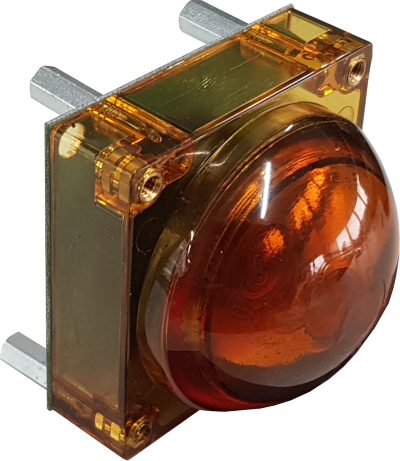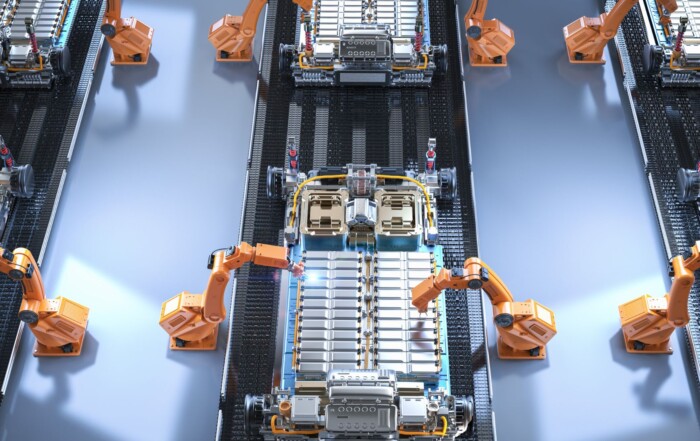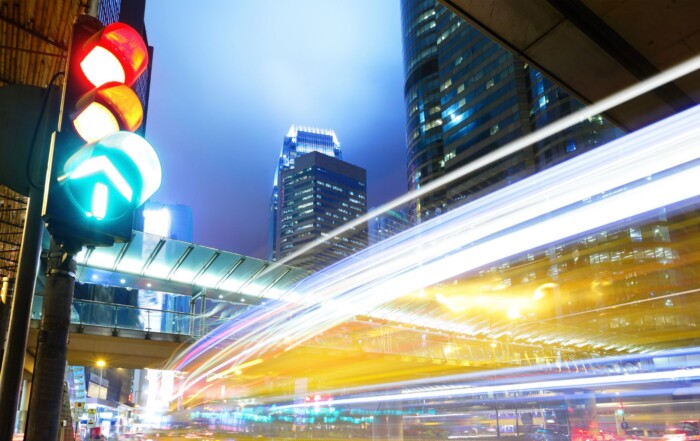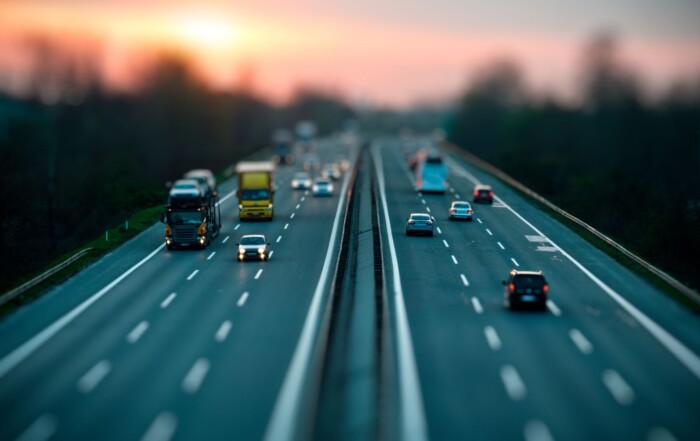Half full or half empty – how much is left in the container?
Fill level measurement with radar technology
How much is left? How much space is left or when do I need to refill? These are fundamental topics in materials management, production, and warehousing. In order to work efficiently and safely, it is very important to know the fill level in a container. This makes storage easier to plan and more cost-efficient. It also provides us the opportunity to stop filling in time, achieve a precise mixing ratio or, if necessary, to order replacements early on. But how do I know the fill level in a silo?
Large tanks, lack of visibility
It is not always possible to tell at first glance how much of a substance is still left – even by the manufacturer. Just peaking inside and estimating is hardly the method of choice when it comes to quality, certainty, and cost-effectiveness. Estimates do not meet today’s standards, when we calculate all aspects of everyday life down to the last detail. In addition, silos are often opaque and encased in order to protect their content. Most containers also have such great dimensions that quickly checking the fill level entails significant effort.
But fortunately, the days when a person had to climb up a large water tank are long gone. Sensors take on this task for us. The further digitalisation and technology advance, the more benefits they yield and the more they support us in terms of optimum storage and process design. Measurement technology is boasting more and more precise and functional solutions which facilitate inventory management in different industries.
Fill levels & measurement technology
There are further factors to take into account when selecting the appropriate measurement method. For example, the environment can impact the measurement result. And not every measurement technology is suitable for every bulk good. Depending on the material’s properties and means of measurement, the sensor may be better or worse at detecting the content. More complex measuring environments, such as containers with built-in fixtures or mechanical equipment, can interfere with fill level detection. The quality of the substance and the safety of the plant should also be maintained at all times.
Common measuring technologies for fill level measurement
Being spoilt for choice can lead to a great deal of indecision. In order to determine fill or limit levels, users have numerous methods available to them, each boasting different benefits or drawbacks for the individual measuring task, and these have to be weighed against each other.
Other applications for fill level measurement include optical sensors (infrared), capacitive probes, or mechanical measuring methods, such as floats. However, most users use ultrasonic sensors so far, because this technology requires no direct contact and can detect a variety of materials. Until recently, they were considered the ideal choice. But radar technology is now increasingly supplanting the competition, thanks to its striking advantages.
Radar for fill level measurement
For a long time, radar was considered an expensive luxury sensor system which provided considerable data but was not affordable for the mass market. The technology as well as the necessary electronic components have made significant progress in recent years. And component costs are dropping as well. State-of-the-art radar solutions have long been presenting a challenge to ultrasonic technology in terms of the price-performance ratio. Radar also features a clear advantage when compared directly: the physical properties of the tank are irrelevant to this means of measurement. Because containers that the ultrasonic waves pass through or that have mixer systems installed cause trouble for ultrasound. More demanding measuring tasks or environments, in particular, really benefit from the use of radar technology.
It impresses through the following 10 advantages:
Radar …
How radar detection works.
The functional principle of radar can be explained in simplified terms with an example from the animal kingdom. The way humans have been using radar technology for years as a means of positioning objects is similar to how bats use the sonar to navigate through their surroundings, as the technology provides us with comprehensive information we then use for positioning. The radar antenna emits electromagnetic waves, and if the high-frequency signal hits an object, this creates a reflection returns to the to the receiver in the sensor as a response signal. The parameters for locating the object can be calculated based on the change in time, distance, pulse, and strength of the signal. This way, the technology determines the speed, position (distance and angle), direction of movement, and presence of static and moving objects.
What data the sensor outputs and how depends on the selected modulation, i.e. the measuring method, and the signal processing of the respective product.
Radar-based distance determination
The basic function of fill level detection is to detect the distance of an object from the sensor. The antenna design is equipped with a highly focused radar beam to concentrate the signal for specifically timed and precise measurement. Detection is contactless.
The radar unit determines the distance between the antenna and the surface of the substance. The device continuously transmits these distance values. By observing the detection results over time, it is possible to detect changes in the fill level. As the distance changes, the radar transmits the new values in real time.
Users can also store information regarding the size of the container by setting the distance between the antenna and the bottom of the container in the GUI. This information also helps with defining limit values. Furthermore, the measured distance can be set to trigger a function based on evaluation of the signal. For example, an alarm might be activated with certain distance values. This way, when a maximum or minimum substance fill level is reached, a signal can be output via one of the programmable outputs.
Application examples
Determining fill levels is essential for many industries. Almost every industry benefits from tracking exact amounts of substances in stock, as this serves in optimising materials management and production. The measuring process, however, entails a wide variety of tasks and challenges. Radar is very well suited for a wide range of applications thanks to its many advantages.
For example, fill level radars are used in food production. The contactless technology does not require direct contact to take measurements – a clear advantage in adhering to food hygiene regulations. The hot or cold conditions necessary for food production or storage is no problem for radar. Additional installed equipment, such as mixers, do not interfere with modern radar systems’ detection.
The rough environment of the construction materials industry also deploys radar sensors to determine fill levels. Here, the devices are sometimes even in continuous use outdoors, in the wind and weather. Once example of this is the storage of sand and gravel in large containers or pits. The filling material doesn’t matter, and the radar detects exactly how much bulk material still fits in despite dust, noise, or dirt.
Another, typical example is the detection of liquids, such as water in a large silo. The radar system also determines the current level even in the event of vibrations, for example when a mobile tank is being transported. Radar also detects slow-flowing fluids. An important function here is the indication of when the maximum or minimum filling level has been reached, in order to avoid overfilling or shortages.
There is a wide range of applications for fill level radars. They determine the current quantity of a substance as well as its level and when it has reached a given limit precisely and reliably through HF distance measurement. The sensors are used in numerous tanks, containers, silos, vessels, transporters, storage facilities, machines, and plants or warehouses.
header picture: © Franco Nadalin by stock.adobe.com
Share This Content
Product highlight: the iSYS-6030 radar system.
 InnoSenT has developed a 60 GHz radar solution whose features are specifically designed for determining fill levels. It reliably determines the distance between the sensor and the filling material regardless of the properties of the material and the measuring environment. The ISYS-6030 delivers impressive performance thanks to its outstanding precision.
InnoSenT has developed a 60 GHz radar solution whose features are specifically designed for determining fill levels. It reliably determines the distance between the sensor and the filling material regardless of the properties of the material and the measuring environment. The ISYS-6030 delivers impressive performance thanks to its outstanding precision.


